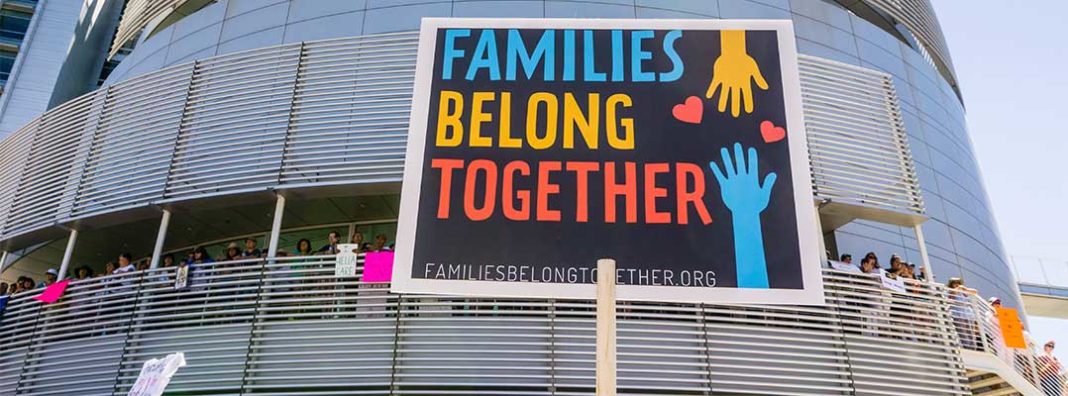
Even before he was elected, President Trump campaigned on anti-immigration issues. And since he took office, Trump has fought immigration more than any other recent President. He has made out immigrants to be “bad hombres” — criminals who are disrupting the American way of life. His efforts to reduce immigration include building a border wall with Mexico, increasing immigration enforcement, making it harder to get visas, and defunding sanctuary cities.
Trump’s efforts against sanctuary cities have been central among those policy changes. Sanctuary cities are jurisdictions that limit cooperation with federal immigration agents. According to Trump, sanctuary protects criminals from enforcement and makes the country vulnerable to crime. His administration has made multiple attempts to end sanctuary. In January 2017, Trump signed an executive order to withhold federal money from sanctuary cities. In response, cities sued and the case remains unresolved. More recently, Trump suggested that he wanted cities to review their sanctuary policies before receiving coronavirus bailout money.
It’s not just Trump, sanctuary policies are controversial across the country. Their merits are debated by hundreds of public officials, from mayors to governors. Advocates for sanctuary policies argue that they give immigrants the peace of mind to come forward about suspicious activity. Opponents say that they protect dangerous criminals.
A series of researchers have dove into concerns and questions related to sanctuary policies. With few exceptions, that research shows that there are no public safety risks from the policies. Instead, the research suggests that sanctuary policies better integrate immigrants into their communities and encourage cooperation. Ultimately, sanctuary might make communities safer.
What is sanctuary?
In the US, part of sanctuary’s history is bound up with religious objections to restrictive immigration policies. In the 1980s, individuals began providing sanctuary to refugees fleeing Central America. Liberation Theology as Dr. Philip Marfleet describes, emphasized “the responsibility of [Christian] church communities as a whole to protect the poor and vulnerable by means of an activist agenda.” These religious ideas led some groups to create sanctuary communities to “confront the US state when its immigration policies or intolerance of marginal people violated community principles.”
Today, the debate about sanctuary policies has stepped out of churches and into town halls and state legislatures. In December of 2019, citizens and lawmakers in Madison, Wisconsin debated a bill that would have banned sanctuary policies within the state. They are far from the only ones.
Still, sanctuary is spreading. The map below shows many of the existing sanctuary jurisdictions by city, county, and state. Sanctuary policies are sometimes informal, and the result of local officials making decisions about how to best serve their communities with their limited resources. Those informal policies don’t appear in this map, even though many areas have them in place.
Formalized Sanctuary Policies as of May 2019. Source: Pacific Standard.
Counties, cities, and states across the country have adopted sanctuary policies. Despite variation, they share one defining characteristic: sanctuary limits how police officers work with Immigration and Customs Enforcement (ICE).
It’s a common misconception that sanctuary policies prohibit cooperation between ICE and the police. In fact, sanctuary policies typically direct police officers to focus on more serious offenses over requests by ICE to hold an immigrant. A well-designed sanctuary policy honors ICE requests to hold individuals who are suspected of serious criminal activity. But holding someone because of unpaid traffic tickets, for example, is unlikely to be worth the police department’s efforts.
As for sanctuary’s legality, federal law requires that sub-national jurisdictions allow communication between local officials and federal immigration authorities. However, that is not a blanket requirement of cooperation. Courts have upheld sanctuary policies in Philadelphia, for example. But overall, the legal questions surrounding sanctuary policies are unsettled.
Research suggests that the positive ruling for Philadelphia is a benefit for public safety and local control of police resources. It’s a relatively new subject in academic research. Yet economists and immigration experts so far have pointed to the potential safety benefits of sanctuary policies over any risks. The long history of immigration and crime research suggests that immigrants are the wrong place to concentrate enforcement efforts.
Does sanctuary increase crime?
The Trump administration’s main argument against sanctuary cities is that they increase crime. Trump described cities with sanctuary policies as places “where people who are criminals are protected…from prosecution.” Like Trump, opponents view sanctuary cities as a public safety issue. This is mostly because immigrants tend to be seen as criminals.
Yet it’s not clear why this would be the case. First, sanctuary is much more limited than this critique believes. Sanctuary does not protect people who are involved in serious crimes, for example. Instead, sanctuary is meant to protect people with unpaid parking tickets from being put into immigration proceedings. Although some sanctuary policies have requirements that those offenses be within the last 15 years, serious crimes are still prosecuted in sanctuary jurisdictions just as they are everywhere else. Second, research shows that immigrants are less likely to commit crime than natives. Within this literature, multiple studies show that sanctuary policies do not require a trade-off with public safety.
Studies looking at data from multiple cities show that sanctuary policies have no effect on violent crime or property crime. In fact, sanctuary cities actually have seen a decrease in robberies and homicides over time. At the macro-level, those times in history when large groups of migrants moved into urban areas are associated with the largest decreases in crime throughout US cities.
This relationship between crime and immigration is in part due to the security that sanctuary cities provide to immigrants. In sanctuary cities, immigrants can live a normal life without fear of deportation. This helps incorporate immigrants into the community and creates trust among its members. Those greater levels of trust encourage immigrants to cooperate with the police when reporting crimes, helping deter future offenses in the community.
Replacing good policy with bad policy
The research on public safety and sanctuary policies provides much to be hopeful about. Fundamentally, research shows that when local officials make policy that allows immigrants to integrate with the rest of their community, the entire community benefits.
Inclusive policing priorities that encourage immigrants to come forward when they see something suspicious or have been victimized themselves tend to reduce overall crime or have no ill effects on public safety. We should pursue policies that encourage cooperation. Sanctuary will protect immigrants and nonimmigrants alike. Policies that limit sanctuaries will only have the opposite effects.


